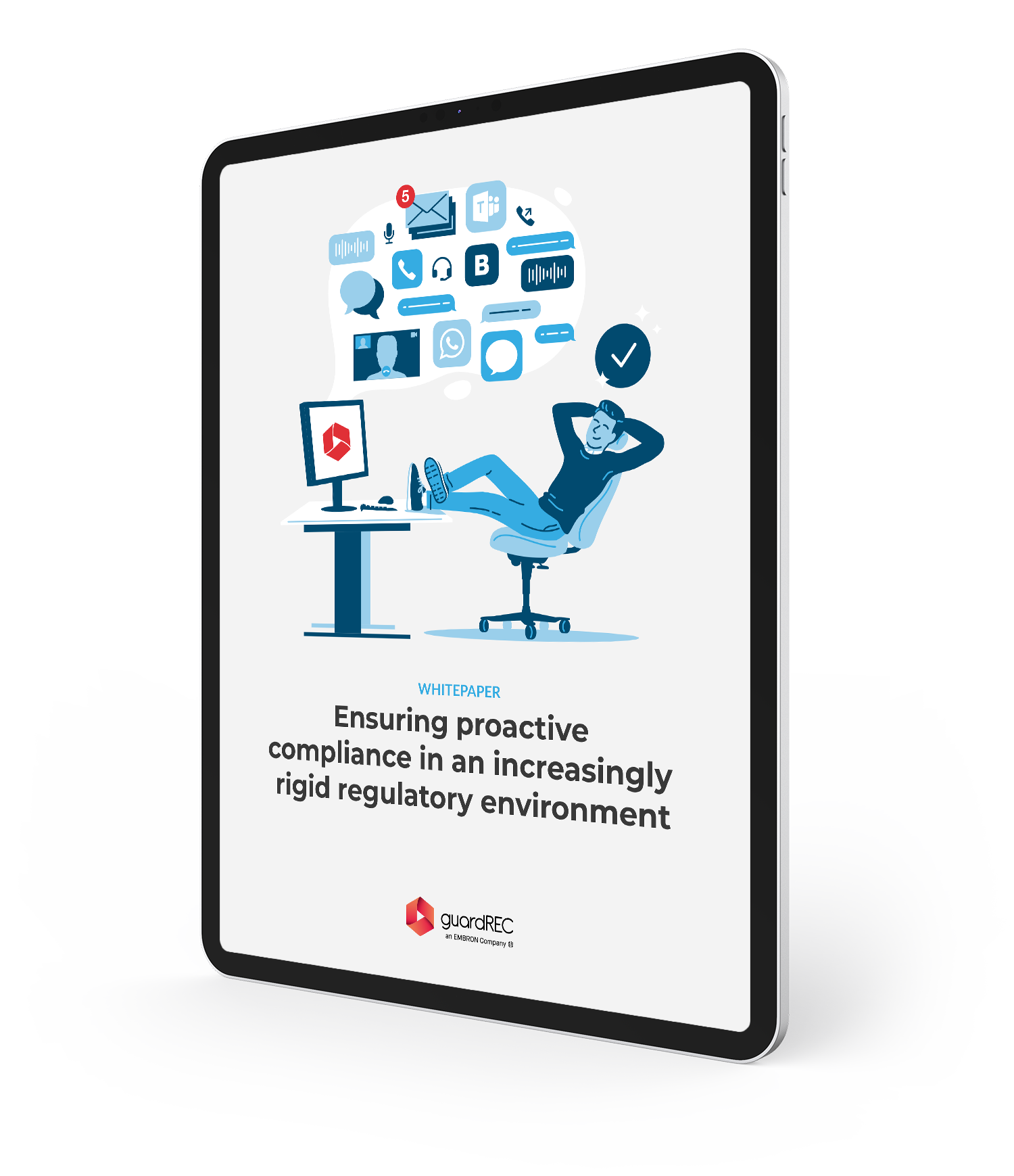Feeling overwhelmed in your role as a compliance officer? Here are five common challenges faced by you and your peers.
|
This article is part 4 of a 6-section whitepaper on ensuring proactive compliance in an increasingly rigid regulatory environment. Fill out your details below to download the complete whitepaper. |
This article is part 4 of a 6-section whitepaper on ensuring proactive compliance in an increasingly rigid regulatory environment.
Due to the ever-changing and increasingly stringent requirements and regulations, along with potentially severe repercussions to any compliance violations, compliance officers tend to work under constant pressure.
Through speaking with our clients we have identified five common challenges faced by compliance officers.
1. Getting a complete overview of the data
The biggest challenge for compliance officers is getting an overview of all contact points between multiple people on both sides of a transaction, spread across a wide array of communication channels.
Collecting fragmented information, stored in multiple locations, on different servers, or in separate systems is very time-consuming, and may create problems when the need to provide supervisory authorities or customers access to relevant data arises.
Additionally, it can be challenging to track and reconstruct a transaction when the information is spread across multiple systems.
By storing all information in one central system, you simplify and streamline the process of obtaining relevant data, allowing you to define specific segments as needed. With automated processes for granting access, you can easily provide authorities and customers access to the relevant data.
2. Achieving complete compliance with regulations
Many compliance managers worry about whether or not their company fully complies with regulations, as even a small breach may have major consequences.
Here are three recurring concerns:
- Uncertainty as to whether or not all permitted communication channels are recorded and stored correctly, and if data can be easily retrieved.
- Risk of lost recordings, especially in regards to email. Many companies entrust each broker and advisor with storing all relevant emails in a specific location or synchronizing their inbox with the CRM system daily. This requires a lot of manual work, puts a lot of responsibility on individuals, and makes it difficult for compliance officers to verify the information.
- Risk of unauthorized access to recordings and information. All data should be encrypted and securely stored, and only be accessible to the company’s control function, i.e. compliance officers.
3. Acquiring adequate documentation
Adequate documentation of compliance efforts is alpha and omega when supervisory authorities come knocking. And yet, many compliance officers find it challenging to provide proof of their approach and routines.
Three challenges, in particular, are giving compliance officers headaches:
- Documenting compliance may be challenging
Because it is not realistic to assume that a compliance officer will have time to review and control every single conversation between a broker and a potential client, the logical option is to use a risk-based approach to identify and prioritize potential breaches. This may be a challenging and very time-consuming process without a smart system for automating risk management and data-driven prioritization. - Whitelisting across multiple channels is difficult
Whereas most compliance managers can whitelist specific telephone numbers, many cannot whitelist sources in other channels, such as email addresses, chat IDs, etc. This makes it difficult to comply with regulations on avoiding surplus information. - Documenting customer complaints is time-consuming
Documenting customer complaints often takes up far too much of a compliance officer's time. In some cases, addressing a complaint requires the compliance officer to collect all recorded data relating to a specific customer relationship, a task made even more tedious if information from different channels is stored in separate systems. Additionally, a lack of filtering options may result in sifting through a large surplus of irrelevant information.
4. Ensuring complete audit trails
In addition to monitoring multiple communication channels, many compliance managers have to spend a significant amount of time ensuring complete audit trails, as well as generating reports.
The more fragmented the information, the more difficult it becomes to refer to a complete audit trail. Storing all data in one central system will simplify the task of verifying the audit trail and streamline the reporting process.
A good compliance system should include an automated reporting solution that gives compliance officers access to integrated and efficient reporting tools, as well as ready-made report templates that make generating and sharing incident reports simple.
5. Creating an internal compliance culture
Although the task of ensuring compliance with all laws, rules, and requirements ultimately falls on the compliance department, the responsibility is shared by all employees in the company. A company-wide compliance culture is crucial for ensuring quality at all levels, but developing such a culture requires both time and effort.
Clear guidelines, good routines, sufficient staff training, and top-down commitment are key elements of creating a proactive attitude towards compliance work in the organization.
Questions to reflect on:
- Does your company employ a risk-based approach in your compliance work?
- How efficient is your process of gathering and preparing all the necessary data for generating reports?
- Is your recording system making your workday easier or more difficult?










